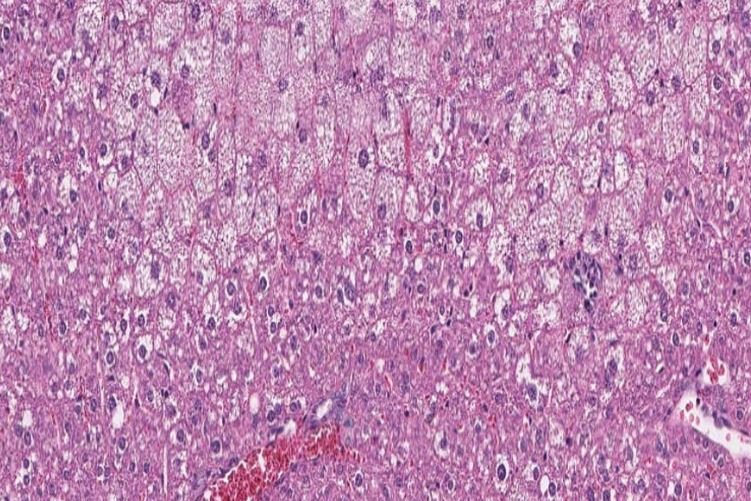Liver complications in Wilson's disease include enlarged cell size, and irregular shape and arrangement in liver tissue. Image courtesy of Cold Spring Harbor Laboratory
June 27 (UPI) -- A compound developed in preclinical experiments is showing promise in treating disorders and cancers with high levels of copper, including Wilson's disease.
Researchers at Cold Spring Harbor Laboratory in New York and an affiliated company, DepYmed Inc., found that PM-1001, a small molecule, reduces copper levels in cells grown in culture samples from Wilson's disease patients and in mice.
The compound acts as a chelator to naturally remove the metal, and researchers think it could lead to a new treatment for Wilson's disease, as well as other conditions.
The findings were published Thursday in Genes & Development.
"It is our hope that this compound may represent the basis for an improved approach to Wilson's Disease," research co-leader Dr. Nicholas Tonks, a professor at the Cold Spring, said in a press release.
Wilson's disease, an inherited disorder, affects 1 in 30,000 people and symptoms usually appear between ages 5 and 35, according to the National Institute of Diabetes and Digestive and Kidney Disease. It was named after Dr. Samuel Wilson who first described the disorder in 1912.
Mutations in a gene called ATP7B prevent the enzyme from excreting excess copper from cells and organs. Topper toxicity can lead to an enlarged liver, hepatitis, cirrhosis and liver failure.
As Wilson's progresses, it can affect the brain, including speech defects, cognitive impairment, psychiatric disorders, tremors, dystonia and Parkinson's-like symptoms.
Food high in copper -- organ meats, shellfish, chocolate, nuts and mushrooms -- should be avoided, according to the Wilson Disease Association. Also, drugs can manage the disease at its early stage.
"Unfortunately, Wilson's disease may be hard to diagnose because its early symptoms are shared by other ailments, and so it is often not treated promptly," Tonks said. "Moreover, currently used treatments, involving 'de-coppering' agents, have side effects and lately have become very expensive."
DPM-1001, taken in pill form, is "exquisitely specific" for copper, the researchers said.
In studying mice, DPM-1001 reduced liver complications, including enlarged cell size, irregular shape and arrangement in liver tissue. Tissue copper levels and disease symptoms also declined.
Currently used agents can reduce copper but they affect levels of other metals, the researchers said.















